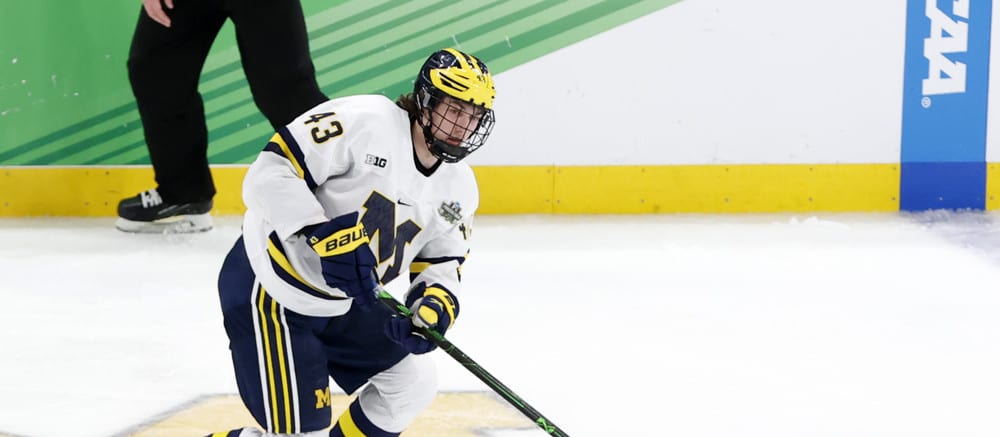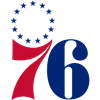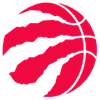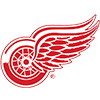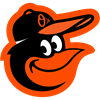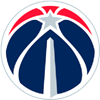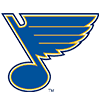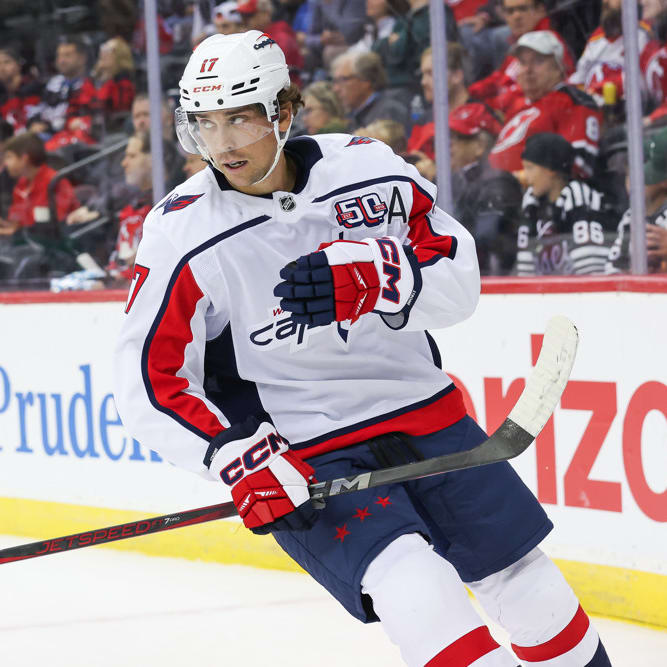This is the second of our annual two-part series detailing the top prospects in the NHL entering the 2022-23 season.
A couple quick notes on this year's list before we get started.
- There were only two names I considered for the top spot. I ultimately went with ceiling over floor, but both players are worthy of being called the top prospect in the game.
- I didn't feel comfortable including Rodion Amirov (LW, TOR) right now given his recent health issues. His ranking on a prospect list is irrelevant in the grand scheme of things. Ivan Miroshnichenko (LW, WSH) is included given the positive updates we have gotten regarding his condition.
And onto the rankings...
1) Luke Hughes (D, NJ): Hughes' freshman season at the University of Michigan went better than anyone could have possibly expected. He averaged nearly a point-per-game (17 goals, 39 points in 41 games) while finishing the year a plus-26. Hughes was named Big 10 Rookie of the Year in addition to being a legitimate candidate for The Hobey Baker Award. Luke is considerably bigger (6-foot-2) than his older brothers Quinn and Jack, although he also has the trademark foot speed and excellent skating stride all three boys inherited from their parents. Hughes' physical gifts were never in question. It was simply a matter of how long it would take for him to consistently use them on a nightly basis. This past year was a rousing success in that regard. Hughes could have played in the
This is the second of our annual two-part series detailing the top prospects in the NHL entering the 2022-23 season.
A couple quick notes on this year's list before we get started.
- There were only two names I considered for the top spot. I ultimately went with ceiling over floor, but both players are worthy of being called the top prospect in the game.
- I didn't feel comfortable including Rodion Amirov (LW, TOR) right now given his recent health issues. His ranking on a prospect list is irrelevant in the grand scheme of things. Ivan Miroshnichenko (LW, WSH) is included given the positive updates we have gotten regarding his condition.
And onto the rankings...
1) Luke Hughes (D, NJ): Hughes' freshman season at the University of Michigan went better than anyone could have possibly expected. He averaged nearly a point-per-game (17 goals, 39 points in 41 games) while finishing the year a plus-26. Hughes was named Big 10 Rookie of the Year in addition to being a legitimate candidate for The Hobey Baker Award. Luke is considerably bigger (6-foot-2) than his older brothers Quinn and Jack, although he also has the trademark foot speed and excellent skating stride all three boys inherited from their parents. Hughes' physical gifts were never in question. It was simply a matter of how long it would take for him to consistently use them on a nightly basis. This past year was a rousing success in that regard. Hughes could have played in the NHL this coming season and not looked out of place. That said, I think one more collegiate season will help him in the long run. He'll get all the ice time he can handle with Power gone and like the path his former teammates traveled, figures to turn pro after the Wolverines' upcoming season is completed. I'm all-in here.
2) Owen Power (D, BUF): Power is the rare prospect who didn't find himself ranked No. 1 in my rankings following his selection at No. 1 overall by Buffalo in 2021. He still isn't there, but he's as close as you can get. Power finished the season with the Sabres, managing two goals and three points in eight contests. Simply put, Power is a two-way horse. He stands 6-foot-6 and well over 200 pounds. Power possesses the all-around skill set to make a major impact on the game in all three zones. He won't be Cale Makar from an offensive standpoint, but 40-plus points annually while playing 25 effective minutes per game seems to be well within the range of outcomes, possibly as soon as this coming year. Power has a high floor and even higher ceiling. Oh, he also won't turn 20 years of age until late November. Power is Buffalo's Power elected to return for his sophomore season at the University of Michigan, where he posted 32 points in 33 games. He played for Canada at the Olympics and is Buffalo's most valuable long-term asset by a significant margin.
3) Shane Wright (C, SEA): Wright's tumble to No. 4 overall in this past July's draft was a shock to most everyone, but more importantly, a massive win for the Kraken, who ended up with the player who was no worse than No. 2 on most everyone's draft boards. Wright is a do-it-all center who is at least solid-average in all facets of the game, with his shot being his greatest attribute. He is a lock to remain in the middle and thinks the game well enough to be an asset in the defensive zone. His ceiling is likely that of a lower-end No. 1 center on a lesser team, or a very good No. 2 guy on a contender. I wish he had that one elite skill to fall back upon in the event of trouble, but the flip side is that Wright has no noticeable weaknesses in his game. Wright might not be a future superstar, but he is still a heck of a player who projects to make multiple All-Star teams over the course of his long career.
4) Juraj Slafkovsky (LW, MTL): Slafkovsky rode the wave of a brilliant performance at the Olympics to the No. 1 overall pick in the recently completed draft. Slafkovsky's stock exploding during the event. He ended up leading all players in goals (7) and points (7) while being named the tournament's most valuable player. He did it all as a 17-year-old. The Slovakian took a regular shift for TPS in Finland's Liiga this past season, posting five goals and ten points in 31 games. Despite his dominant showing at the Olympics, Slafkovsky is still mostly projection at this point. He's a legitimate 6-foot-4, with a long reach and excellent hands. He can score goals in a variety of different ways. He reads plays well, although his offense can be a bit perimeter-oriented at times. I imagine that will change over time. The upside here is significant, perhaps 30-plus goals on an annual basis, given Slafkovsky's youth and what he has already shown he is capable of. He should play in Montreal this coming season.
5) Logan Cooley (C, ARI): The Arizona brass thought enough of Cooley to select him at No. 3 overall this past July despite Wright falling. Cooley played his way onto Team USA's World Junior roster at the abbreviated tournament as a 17-year-old this past December and seemed primed to fill a key role for the team before COVID-19 cancelled the proceedings. It's impossible to miss Cooley if you're watching a game in which he's playing. He flies around the rink, in addition to possessing the hands and creativity to carve up opposing defenders. Cooley plays considerably bigger than his 5-foot-10, 175-pound frame would lead you to believe. What I like most about Cooley's game is the fact he finds a way to impact the game even if he isn't putting up points. There is a high floor and even higher ceiling here, probably the highest of all 2021 draftees. Cooley is committed to the University of Minnesota.
6) Matty Beniers (C, SEA): Beniers followed the same path as fellow University of Michigan teammates Power and Kent Johnson, finishing his season with the Wolverines before signing with his NHL club, in this case, Seattle. Beniers led all Big 10 skaters in scoring last year with 20 goals and 43 points in 37 games. He finished the year posting nine points in 10 games with the Kraken, in addition to playing for Team USA at the Olympics. I had Beniers No. 6 on my big board for the 2021 draft. He ultimately went No. 2 overall to Seattle and a year-plus later, I acknowledge I likely had him a couple slots too low. My concerns regarding Berniers were that I didn't feel he had the dynamic physical elements of some of the other top players available in the draft, but he's so smart and well-rounded that his skills will play in a top-six role. Outside of injury, there is virtually no scenario in which Beniers doesn't turn into a productive long-term NHL player.
7) Dylan Guenther (RW, ARI): Guenther was unquestionably one of the WHL's best players this past year, posting 45 goals, 91 points, and a ridiculous plus-51 rating in 59 games for an Edmonton team which won the WHL Championship. Unfortunately, Guenther suffered an injury in the Oil Kings' WHL final v. Seattle and was forced to miss the Memorial Cup as a result. Guenther is about as "clean" a prospect as you will find on this list. He has size (6-foot-2), skill, and an excellent work ethic. Guenther's shot is well above-average, and he has shown the ability to score goals in a variety of different ways. The Coyotes won't be winning anything this coming season or likely any season soon, but Guenther has absolutely nothing left to learn at the junior level and Arizona should give him a nine-game trial, at a minimum, to show he belongs this coming year.
8) Kent Johnson (C, CBJ): Johnson was his predictable productive self in his sophomore season at the University of Michigan, averaging more than a point-per-game (37 points in 32 games). The Jackets saw enough progress to sign him to an entry-level contract and Johnson finished the season in the NHL, posting three assists in nine games. He also got a ton of run for Canada on the international circuit, representing his home country in both the Olympics and World Championship. Johnson has exceptional individual offensive abilities. He's a brilliant puck handler and possesses exceptional vision. He's more of a playmaker than finisher and is lethal with the man advantage. Johnson will turn just 20 years of age days after this upcoming season begins, but I see no reason for Columbus not to give him all the playing time he can handle. He's unquestionably one of their top three or four best offensive players.
9) Jake Sanderson (D, OTT): I wasn't a fan of Ottawa's selection of Sanderson at No. 5 overall in 2020, but his development has gone about as well as possible since and Sanderson is now on the verge of earning top-four defensive minutes for the Senators in his first NHL campaign. The improvement in Sanderson's offensive game this past season was noticeable. He averaged more than a point-per-game (26 points in 23 games) for the University of North Dakota, in addition to making a brief one-game cameo for the United States at the Olympics. Sanderson is a legitimate two-way horse with the skill set to impact the game in all three zones. I'm not big on comps for players, but he reminds me of prime Ryan McDonagh when I watch him. A big kid who has size, can skate, and brings and nice mix of physicality and skill to the table. A pick which looked questionable at the time appears as if it will work out for the Sens.
10) Mason McTavish (C, ANA): A true nomad and the No. 3 overall pick in the 2021 draft, McTavish played for five different teams this season. He spent time with the Ducks (9 games), their AHL affiliate in San Diego (3 games) and the Canadian Olympic team (5 games), along with splitting his OHL campaign between Peterborough (5 games) and Hamilton (24 games). McTavish was stellar at every stop. The highlight of his season was posting 29 points in 19 postseason games to lead Hamilton to the OHL Championship. McTavish competes well and has the skill to match. His speed is just average but overall, I find it difficult to poke holes in his game. I had McTavish at No. 12 on my big board in my draft year, but that was primarily because there was no OHL season in 2020-21 and I found his potential difficult to gage. A year-plus later, McTavish is an easy top-25 prospect in the league.
11) Cole Perfetti (LW, WPG): Perfetti was limited to just 25 games this past season due to injury. He played 18 games with Winnipeg (7 points) and 17 games with their AHL affiliate in Manitoba (15 points). Perfetti was seemingly on the verge of a breakout when an upper-body injury suffered in the middle of February ended his season. The fact Perfetti was productive offensively at both levels is obviously a good sign. Perfetti's hands and brain are world class. He was a huge scorer in his OHL days, with the lone concern in his prospect profile being whether he would be able to overcome a mediocre set of wheels. The early returns are encouraging. Perfetti should play a key offensive role for Winnipeg this coming season and thus graduate from this list in short order.
12) David Jiricek (D, CBJ): High on Jiricek from the start of the draft process, Columbus grabbed the rearguard at No. 5 overall in the recently completed draft and signed him to an entry-level deal less than a week later. An injury suffered by Jiricek in what ended up being the Czech's only game at the pandemic-shortened World Juniors cost him the rest of the season, although He ended up playing 29 games for Plzen in the first half of the season (5 goals, 11 points), logging heavy minutes for a quality club against decent competition. Jiricek brings a nice combination of size and skill to the table. He's 6-foot-3 and should play at well north of 200 pounds when he finally makes it to the NHL. While Jiricek isn't a dynamic offensive player, he's a very good passer with a very accurate shot. Toss in the fact Jiricek gets some bonus points for being a right-handed shot and you have a solid, second-pairing defender who can be deployed in any situation.
13) Matthew Savoie (C, BUF): Savoie, who was denied "exceptional" status to join the CHL a year early despite being the first-overall pick in the 2019 WHL Bantam Draft, finally made his debut for Winnipeg this past season and went on to post 35 goals and 90 points in 65 games, the latter of which led all WHL rookies. The center is an exceptional passer who looks like he could help an NHL power-play right now. His offensive reads are very strong and he's more than willing to go to the difficult areas of the ice to make a play. Savoie is undersized at about 5-foot-9 and doesn't have blazing speed, but he skates fine and thinks the game well enough to make up for any potential shortcomings in that area. Savoie looks like a high-octane offensive player who will be able to generate chances for both himself and his linemates in a variety of different ways.
14) William Eklund (LW, SJ): San Jose gave Eklund a nine-game trial to begin last season just months after selecting him No. 7 overall. He played fine, posting four assists, but the Sharks smartly realized they would be going nowhere and didn't want to burn a season off his entry-level contract and loaned him back to his native Sweden to finish the year. I had Eklund as the No. 2 player on my big board in last year's draft behind only Power and remain extremely high on him. Eklund can fly, has excellent vision and puck skills, and works his tail off. The Sharks are going to be a poor team again this coming season, but they do have some talented offensive players on their roster (Timo Meier, Tomas Hertl, etc.) and Eklund should seamlessly fill a top-six offensive role immediately assuming the team gives him the opportunity.
15) Alexander Holtz (RW, NJD): The Devils were a train wreck this past season, but their AHL team was one of the best in the league and Holtz was a major reason why. In 52 games with Utica, Holtz posted 26 goals and 51 points. In a brief nine-game run with New Jersey, Holtz posted two assists. Holtz is the very definition of a sniper. He has a cannon of a shot and is one of few players these days with the ability to consistently beat opposing NHL goaltenders from distance. Holtz's ability to generate offense off the rush is somewhat limited because he lacks pace, but he's deadly with the man advantage and needs little room to score. Overall, Holtz had an excellent first season in North America and should be primed for a full-time role with the Devils this coming season.
16) Simon Edvinsson, (D, DET): It has become abundantly clear at this point that Detroit President Steve Yzerman knows exactly what he is doing at the draft table. He shocked the hockey world by taking Moritz Seider at No. 6 overall in 2019 and all Seider did was win the Calder Trophy this past season. Yzerman went back to the well and grabbed Edvinsson at No. 6 in 2021. A hulking (6-foot-4) all-around threat who brings size and skill to the table, Edvinsson took a regular shift for SHL Frolunda this past season, posting 19 points in 44 games. Edvinsson lacks dynamic individual traits, but he's by no means a butcher with the puck on his stick and should be able to provide plenty of secondary offense at the NHL level. I see a solid middle-pairing defender who should get a chance to crack the Detroit roster out of training camp this coming season.
17) Simon Nemec (D, NJ): Like in all professional sports, NHL executives think they know more than their counterparts and thus try to get creative when the simplest and likely best solution is staring them in the face. Jersey's decision to pass on Wright at No. 2 overall this past July in favor of Nemec, who plays a position of need, could very well come back to haunt the club down the line. Of course, Nemec is an excellent prospect in his own right. Scouts have gotten plenty of looks at Nemec over the years. Not only has he played against men for his club team in Slovakia the past couple seasons, but he's also competed at the Olympics, World Juniors, and World Championship. Nemec has always looked exceptional when playing against kids in his own age group. His defensive reads are excellent, his skating is solid, and he can jump in the play and create offense when the opportunity presents itself. The only potential knock on Nemec is that he has just average size at 6-foot-1 and about 180 pounds. He does so many things well that I have an extremely difficult time envisioning a scenario in which Nemec doesn't develop into a productive two-way NHL defender, likely sooner rather than later.
18) Brandt Clarke (D, LA): Clarke's future NHL value is completely tied to the offense he provides from the back end. As far as that goes, he had a pretty good year. He averaged just over a point-per-game (59 points in 55 games) for OHL Barrie, although he was a massive surprise omission from the December COVID-shortened Canadian World Jr. roster. Players who are the No. 8 overall selection in their draft class typically play in that tournament six months later. Clarke's detractors point to an awkward skating stride and questions regarding his ability to defend man-on-man at the NHL level. I don't think we are ever going to get answers to concerns until Clarke turns pro. If he's playing in the OHL, his overwhelming talent will win out. For the record, I had him No. 4 on my big board for the 2021 NHL Draft and thought the Kings made a smart selection at the time, and still do today.
19) Marco Rossi (C, MIN): Rossi didn't play at all in 2020-21 as the result of serious health complications brought on by a bout of COVID-19. He was back to full strength this past season and the Wild wisely took it slow with them, a move I agreed with and advocated for prior to the season. Rossi played nearly the entire year with AHL Iowa, posting 18 goals and 53 points in 63 games. He was scoreless in a brief two-game cameo with Minnesota. Other than No. 1 overall pick Alexis Lafreniere, Rossi (No. 9 overall) was widely considered the most NHL-ready player available in the 2020 draft. Rossi is behind where everyone expected him to be due to the health scare, but he'll be turning just 21 years of age a few weeks before this upcoming season begins, and his ultimate ceiling is unchanged. Rossi safely projects as a second-line center with the potential for a tad more.
20) Joakim Kemell (RW, NSH): I had Kemell No. 7 overall on my big board for the 2022 NHL Draft and thought Nashville got a steal by grabbing him at No. 17. There was a clear dip in Kemell's game in the second half of the season, but that was inevitable considering how well he played in the early going. He still finished the year leading all Liiga rookies in goals scored with 15 (in 39 games). A good portion of Kemell's offensive value comes from plays he creates for himself, which is understandable considering he has an excellent shot and extremely fast hands. He's certainly more of a finisher than playmaker, but Kemell has long been a better passer than he gets credit for. His skating is somewhere around average to a tick above, depending on your viewings. Kemell projects to be an above-average NHL player, but perhaps not a star.
21) Jonathan Lekkerimaki (RW, VAN): Clearly too good to play for Djurgardens' junior club (20 goals, 35 points in 26 games), Lekkerimaki spent nearly the entire second half of the season playing for the big club in the SHL and had success, posting seven goals and nine points in 26 games. Lekkerimaki is an undersized (5-foot-11), highly skilled offensive player. He has a big shot and has displayed a willingness to go to the difficult areas of the ice to make a play. That said, Lekkerimaki is very much a long-term upside play. I could see a scenario in which he eventually arrives in North America and struggles for a while until he learns how to consistently create space against bigger opposing defenders. I still think the upside here is worth betting on. Vancouver, who selected Lekkerimaki No. 15 overall in July, will let him play in Sweden for at least another season.
22) Jack Quinn (RW, BUF): Things are trending upwards for the Sabres these days and a breakout performance from Quinn this past year is one of the major reasons why. Quinn finished his first professional season with 26 goals and 61 points in 45 AHL games. That placed him fourth in the league in rookie scoring, although he played at least 21 fewer games than the three guys above him, so he was unquestionably the best first-year player in the league. Quinn was selected No. 8 overall by Buffalo in 2020. He scored 52 goals in his final OHL season, but there were concerns regarding how effective he would be at the professional level due to a lack of foot speed. The early returns are very promising. Quinn's offensive awareness is terrific. He has a quality shot and does an excellent job of finding dead spots in coverage to generate scoring chances. Quinn's next challenge will be to produce at a similar clip at the NHL level. He did get a brief two-game run with Buffalo last year, posting a goal and an assist.
23) Danila Yurov (RW, MIN): The Wild have had all sorts of success with Russian draft picks in the past and nabbing Yurov, the No. 9 player on my big board, at No. 24 overall in the 2020 draft seems like the organization's latest massive coup. Like many young Russians, Yurov barely played in the 21 games worth of action he saw with Magnitogorsk's KHL club. He failed to record a point during that run, but was dominant (13 goals, 36 points) in 23 games their MHL junior club. Simply put, he makes plays all over the ice and is a scout's dream. Yurov is talented enough to beat opposing defenders one-on-one and is tenacious with his play away from the puck. The upside here is quite significant, as Yurov is a legitimate two-way guy with both speed and skill to his game.
24) Cutter Gauthier (C, PHI): The helium Gauthier appeared to possess heading into July's draft ended up being entirely legitimate as the Flyers selected him at No. 5 overall. The appeal with Gauthier is the overall package. He's a legitimate 6-foot-3, can play both center and wing, and has a hard, heavy shot. I've always found his offensive game around the net to be basic, but not in a bad way. He is big enough to carve out space down low against opposing defenders and can shoot the puck well enough to beat goalies from far out. I think he's better suited to the wing, but Gauthier has already said he will be playing center upon his arrival at Boston College this coming fall. We'll see if it works out. Gauthier's father, Sean, played one NHL game with San Jose in 1998-99.
25) Brennan Othmann (LW, NYR): Othmann was one of the very best players in all junior hockey last season. He scored 50 goals in 66 games, becoming one of just two OHL players to reach that milestone. He ultimately finished with 99 points, in addition to posting a whopping 290 shots on goal, good for third in the league. Othmann has an excellent shot and excels at attacking opposing defenders with speed. He'll fire the puck from anywhere, works his tail off, and seemingly always finds a way to get his chances. Othmann clearly has more offensive ability than I gave him credit for heading into his draft year. I'm not sure he's truly ready for NHL duty, but I expect the Rangers to give Othmann a long look in camp. He's clearly their top prospect at this point and another contributor on an entry-level contract would be found money for New York at this point.
26) Jesper Wallstedt (G, MIN): I had Wallstedt ranked as my top netminder available in the 2021 draft and felt Minnesota -- with little goaltending depth in their system -- got a steal at No. 20 overall. The Swede was his usual steady self in the SHL this past season, posting a 12-10-0 record with an SHL-best 1.98 GAA and .918 save percentage in 22 games. Wallstedt signed his entry-level deal with the Wild in May. He is calm and composed on goal. Wallstedt reads plays extremely well, is rarely caught out of position, and has excellent size at 6-foot-3. I'm not sure there's top-flight upside here, but Wallstedt should be a solid long-term starter for Minnesota, likely sooner rather than later. He will almost certainly start the 2022-23 campaign with AHL Iowa.
27) Yaroslav Askarov (G, NSH): Askarov played only 15 regular season games this past season, six with SKA's main club in the KHL (2-1-2, 1.81 GAA, .913 save percentage) and nine with their second tier VHL affiliate (5-2-2, 2.57 GAA, .899 save percentage). Askarov signed his entry-level deal with Nashville in May and is expected to play this coming year in North America. Getting Askarov overseas less than two years after drafting him No. 11 overall in 2020 is a massive coup for the Preds and their management/scouting group. Askarov is one of the most highly decorated goaltending prospects in recently memory. He's extremely athletic for a kid who stands 6-foot-4 and his compete level is quietly outstanding. Juuse Saros has three years left on his deal at the bargain-basement rate of $5 million per, so Nashville can start Askarov in the AHL and allow his play to dictate when he moves up the ladder.
28) Wyatt Johnston (C, DAL): The OHL didn't have a 2020-21 season due to the COVID-19 pandemic. Prior to that, Johnston posted 30 points in 53 games back in 2019-20. Dallas believed in Johnston enough to spend the No. 21 overall pick on him in the 2021 draft and he responded with 46 goals and 124 points in 68 games this past season. Johnston's 124 points led the league, and he was also named the OHL's Most Outstanding Player. Oh, Johnston also led the league in assists (27) and points (41 in 25 games) during the OHL postseason. Johnston's breakaway speed is lacking, but he does everything else at a high level. He's creative, goes to the difficult areas of the ice to make a play, and is equally adept at both finishing and setting up his teammates. This season could not have gone any better for Johnston and it will be interesting to see what he can do for an encore in 2022-23.
29) Conor Geekie (C, ARI): The Coyotes thought enough of Geekie to give up a nice package of picks to move up to No. 11 in July's draft to select him. The Winnipeg Ice had the best record in the WHL this past season at 53-10-5, which is understandable considering their top two centers were Geekie and Savoie. 6-foot-4 pivots with size and high-end skill never last long in the draft, so Arizona's attraction to Geekie shouldn't come as much of a shock. Not only is Geekie huge, he's also very good at using his size to his advantage considering his youth. He averaged more than a point per game this season (24 goals, 70 points in 63 games), although I admit I expected a tad more production. I would feel much better about Geekie's future projection if he was a bit better skater. He really labors getting around the rink at times, although to his credit, Conor's effort level is strong, and his constant movement helps negate some of the concerns about his lack of foot speed. For the moment, I feel better about projecting Geekie as a future secondary piece as opposed to a true top-line center.
30) Matthew Coronato (RW, CGY): Coronato led the USHL in goals (48) two seasons ago. He stepped on campus at Harvard this past fall and immediately filled a key role for the Crimson. Coronato finished the year with 18 goals and 36 points in 34 games, both excellent totals for a 19-year-old freshman. Although he's gained a reputation as a sniper, Coronato is a legitimate all-around player. He's reliable defensively and battles hard in all three zones. His passing has long been underrated, and while he's not a burner, he gets around just fine. I expect Coronato to be one of the best players in all of college hockey this coming season and imagine the Flames will give serious consideration to signing him to an entry-level contract and having him turn pro after Harvard's year is complete.
31) Ivan Miroshnichenko (LW, WSH): It was announced in early March that Miroshnichenko was diagnosed with "serious health problems" and may miss all next season. Miroshnichenko's agent has since confirmed he was treated for Hodgkin's Lymphoma and is currently in remission. His draft stock ended up holding steady, as he ultimately was selected No. 20 overall by Washington. On ice, Miroshnichenko looks like an easy top-six forward. He has the hands, speed, and offensive skill set to play a finesse game and the size (6-foot-1, 185 pounds) and competitiveness to play a physical game. Miroshnichenko has a ridiculous shot, with the ability to beat opposing goaltenders consistently from distance. Miroshnichenko was a clear lottery talent, and the Caps were obviously comfortable enough with his medicals to make such a commitment to the player.
32) Brad Lambert (C, WPG): Lambert nearly fell out of the first round entirely in this past July's draft, but not quite. Winnipeg selected him No. 30 overall with the pick acquired from the Rangers in the Andrew Copp deal. Simply put, for all Lambert's physical gifts, not enough got done this past season. In Lambert's defense, he played for two different teams in Finland's Liiga and appeared to be well on his way to a monster performance (five points in two games) at the World Juniors before the tournament was cancelled. At his best, Lambert is a creative puck distributor with excellent hands and arguably the best set of wheels in the entire draft. I would have been terrified to draft him in the lottery, but players with this type of God-given ability are rarely available at the end of Round 1. It's a high-risk/high reward play for the Jets, although one that was certainly worth trying given the overall state of the franchise now.
33) Kevin Korchinski (D, CHI): Korchinski, a defenseman, led all WHL rookies in assists this past season with 61 in 67 games. He has plenty of size at 6-foot-2 and skates well enough to blow past opposing forwards on zone exits. Korchinski has enough offensive ability to be an asset on an NHL power-play, but his play away from the puck needs work. He has a large enough frame to make life miserable for opponents in the defensive zone. Korchinski will never be the type to log heavy, extended minutes on the penalty kill, but that's not why Chicago drafted him. The common comp for Korchinski is Golden Knights defenseman Shea Theodore, simply because they are both offensive-minded rearguards and both played for Seattle. Korchinski wouldn't have been my pick at No. 7 overall, but he wouldn't have lasted much longer if the Blackhawks hadn't have selected him.
34) Frank Nazar (C, CHI): Nazar's game combines high-level speed with an exceptional compete level. Nazar has played both center and wing in the past, but the US NTDP deployed him primarily in the middle this past season. I think his game may be better suited to the wing, where he can simply fly the zone and wreak havoc on opposing defenders on the forecheck, but I expect Chicago to run him out there as a pivot until he proves he can't handle it. It's difficult for a player who skates this well and works this hard not to develop into a useful NHL player in some capacity. Nazar's long-term ceiling will be determined by how much his offensive game improves. He is committed to the University of Michigan.
35) Dylan Holloway (LW, EDM): Holloway had wrist surgery right before the start of last season, his first as a professional, and was limited to 33 AHL games as a result. He was productive when healthy (8 goals, 22 points) and dressed for the Oilers in one postseason contest, what ended up being their final game of the year, a 6-5 loss to Colorado in Game 4 of the Western Conference Finals. Holloway can fly. He speed is exceptional and he's extremely noticeable on the ice. I had questions in his draft year regarding his hands and his ability to generate offense using something other than his speed, but those concerns were clearly overblown. The Oilers need all the cheap talent they can find, and Holloway and his $925,000 cap hit would seem to be a prime candidate for a full-time depth role this coming season. I wouldn't be shocked if he played his way up the lineup as the 2022-23 campaign progresses.
36) Sebastian Cossa (G, DET): Cossa's numbers this past season weren't quite on the same level as we saw from him the prior two years, but it's difficult to poke holes in the resume of a netminder who finished the season with a 33-9-3 record, 2.28 GAA, .913 save percentage and led the Edmonton Oil Kings to the WHL Championship and a spot in the Memorial Cup. Cossa rode the momentum of a strong draft season to being selected No. 15 overall by Detroit in 2021. Cossa has elite size at 6-foot-6. His positioning is strong and his athleticism average. I see no reason he can't be a solid starting NHL goaltender with minimal improvements. Alex Nedeljkovic – who posted a 3.31 GAA in 59 games last year in his first season in Detroit -- is not the long-term answer for the Wings, so Cossa should be able to climb the ladder to steady NHL playing time as soon as his play dictates.
37) Chaz Lucius (C, WPG): Lucius was fine (9 goals, 19 points in 24 games) in what ended up being his only collegiate season, although I can't say I was blown away by what he showed at the University of Minnesota. To his credit, Chaz's play did improve as the season progressed. Lucius is an offensive player. He's extremely skilled and creative with the puck and can make plays in tight areas. His game lacks pace at times and although it hasn't been an issue yet, I'm still worried he may end up as a winger long term, although that's not the worst thing in the world. Lucius clearly isn't NHL ready, and I was surprised the Jets signed him to an entry-level deal in late April. Lucius is eligible to play in the AHL, although even that seems like a stretch now. His junior rights are owned by the WHL Portland Winterhawks and I think that is the destination that makes the most sense for all parties involved. I could easily see Lucius being among the WHL leaders in scoring if that's the route he and the Jets decided on for the coming year.
38) Lukas Cormier (D, VGK): The reigning two-time QMJHL Defenseman of the Year, Cormier took his game to new heights this past season, finishing with a hysterical 33 goals, 81 points, and a plus-40 rating in 62 games for Charlottetown. The offensive production was not a fluke. Cormier can skate, has a cannon of a shot, and is probably ready to run an NHL power play right now. Cormier's play in his own zone isn't a strength, but he is about as effective as can be reasonably expected for a kid who is 5-foot-10 and not particularly physical. Cormier's NHL value will be directly tied to how much offense he will be able to generate and given what we have seen the last two years, the long-term potential here appears significant.
39) Denton Mateychuk (D, CBJ): Built in the mold of the "modern" NHL defenseman, Mateychuk is an undersized (5-foot-11), fleet-footed rearguard with above-average puck skills. He defends with brain as opposed to brute strength. Mateychuk received a ton of ice time for Moose Jaw (WHL) this past season and it resulted in him averaging nearly a point per game (13 goals, 64 points in 65 games). He also finished with a plus-20 rating and somehow only had 15 penalty minutes, which is mind-boggling considering it seemed as if he never left the ice some nights. A defender with the ability to easily skate the puck out of his own zone at the drop of a hat is invaluable in today's game, and while Mateychuk may never be the type to log heavy penalty-killing minutes, he still should be able to carve out a career as an offensive, second-pairing rearguard.
40) Logan Stankoven (C, DAL): Stankoven turned a 45-goal, 104-point (in 54 games) with season with Kamloops into both WHL and CHL Player of the Year awards. He also led all WHL skaters in goals (17) and points (31) in 17 playoff contests. Stankoven is slight at about 5-foot-8 and 170 pounds, but he has easy top-six offensive abilities, and his work ethic has always been universally praised. Stankoven is an aggressive north-south player who is more than willing to go to the difficult areas of the ice to make a play despite being undersized. He should never have lasted to the No. 47 overall pick in the 2021 draft. Stankoven is just another example of the Stars acing the draft process the past few years.
41) John-Jason Peterka (RW, BUF): A native of Germany, Peterka arrived stateside this past season and performed far better than even the most optimistic evaluators could have ever predicted. He ended up leading all AHL rookies with 28 goals and 68 points in 70 games. Peterka also got a brief two-game stint with the Sabres. It's seeming quite clear given what we saw last season that I underrated Peterka's offensive abilities. The fact he was able to produce at the level he did despite the fact he turned just 20 years of age this past January was remarkable. Peterka always had a high floor because he works his tail off every single shift, is extremely difficult to knock off the puck, and excels at winning board battles, but he suddenly has the look of a high ceiling option, as well. Best of all, he appears to be just about NHL ready.
42) Pavel Mintyukov (D, ANA): Mintyukov crossed the Atlantic this season and proceeded to average nearly a point per game (17 goals, 62 points in 67 games) for OHL Saginaw. It was quite a showing considering the Russian didn't play at all a year ago due to the COVID-19 pandemic. I love his aggressiveness, as he's seemingly always looking to make plays with both his feet and with the puck on his stick. As one would expect, mistakes come along with that, but I'd much rather a coaching staff attempt to reign in a player as opposed to the opposite. I'm not sure Mintyukov will ever be more than average in his own zone, but his mobility combined with a big shot gives him legitimate second-pairing upside down the road. I'm a fan.
43) Brendan Brisson (C, VGK): I would have pegged Brisson as a guy who was likely to play more than two seasons at the University of Michigan at the time, he was selected No. 29 overall in 2020 draft, but he was so good (21 goals, 42 points) in 38 games this past season that the Golden Knights happily handed him an entry-level contract in late April. Brisson finished the year with the club's AHL affiliate in Henderson posting three goals and eight points in seven games. Brisson also played for Team USA at the Olympics, scoring twice in four contests. Brisson's game can be a little too perimeter-oriented at times for my liking, but his offensive skills aren't in question. He possesses a wicked one-timer which he features on the power-play and has long been an excellent playmaker. Brisson is likely to have to fill a top-six offensive role to be a productive NHL player, but everything we have seen from him the past 24 months says he can do so in short order.
44) Mavrik Bourque (C, DAL): Bourque was unquestionably one of the best players in the QMJHL this past season (20 goals, 68 points in 31 games) and looked the part of a former first-round pick (30th overall in 2020). Bourque added nine goals and 25 points in 16 postseason games to be named QMJHL Playoff MVP. Bourque is more shifty than fast, although he has the individual puck skills to win one-on-one battles with opposing defenders. His creativity is exceptional, and he is seemingly always in the correct spot in all three zones. I'd like to see Bourque go to the dirty areas of the ice just a bit more, but that's about my only knock on his game. He's a solid, solid player.
45) Matthew Knies (LW, TOR): Knies went No. 57 overall to Toronto in the 2021 NHL Draft, and a year-plus later, Knies would be an easy first-round selection in any potential re-draft. Knies looked better in his freshman season at the University of Minnesota than at any point in his two-year USHL run. He averaged exactly a point-per-game (15 goals, 33 points) for the Gophers and played for the United States at the Olympics. Knies is a massive kid (6-foot-3) with a cannon of a shot. He was noticeable on a nightly basis for Minnesota, often making clutch plays all over the ice. Knies and the Leafs spoke after the former's season ended about him signing an entry-level deal and presumably immediately joining the NHL lineup for Toronto's playoff push, but Knies elected to return to school. Considering how close he appeared to be leaving, I would be shocked if Knies saw a third season of collegiate hockey. The most likely scenario is that Knies joins the Leafs at some point in the spring of 2023.
46) Jakob Pelletier (LW, CGY): The Flames resisted all overtures to potentially move Pelletier the last few years and it looks like the right call on the heels of his first professional season in which he racked up 27 goals and 62 points in 65 games while being named to the AHL All-Rookie Team. Pelletier was an excellent offensive player in his QMJHL days, with the lone major concern regarding his future projection being whether his 5-foot-9 frame would hold up to the rigors of the professional game. The early returns have been extremely encouraging. Pelletier has middling speed to a small player, but his work ethic is exceptional. I'm more optimistic about Pelletier at this point than at any point since he was drafted 26th overall by Calgary in 2019.
47) Lukas Reichel (LW, CHI): Reichel arrived stateside last season and was brilliant as a 20-year-old. Reichel's professional experience entering the year consisted of 80 DEL games in his native Germany, but that didn't stop Reichel from averaging more than a point-per-game (21 goals, 57 points in 56 games) for AHL Rockford. He also received an 11-game trial with Chicago in which he posted a single assist. Reichel plays a very mature game for such a young player. His individual offensive skill set is underrated, but he can also adapt to fill a variety of roles for a hockey club. His ultimate role for the Blackhawks might be that of a good depth player as opposed to a legitimate top-six winger, but the early returns regarding Reichel are extremely encouraging.
48) Kirill Marchenko (LW, CBJ): Four-plus years after selecting him No. 49 overall in 2018, the Jackets are primed to get a return on their investment in Marchenko. The talented Russian signed an entry-level deal with Columbus in early May. Marchenko is coming off another good year in the KHL, finishing with 12 goals and 20 points in 39 games for a loaded SKA St. Petersburg team. All told, Marchenko posted 34 goals and 64 points in 114 KHL games, excellent numbers for such a young player. Marchenko is a massive (6-foot-3) kid with excellent hands. His extended playing time in the second-best league in the world should aid in his adjustment to North American hockey. The Jackets would probably like to take it slowly with Marchenko in an ideal set of circumstances, but I expect him to force the club's hand in training camp and earn a spot on the NHL roster. It's not as if the Columbus lineup is overflowing with high-end offensive options.
49) Marco Kasper (C, DET): Kasper seemed like the exact type of player Detroit President Steve Yzerman would be enamored with heading into the 2022 draft, so it came as no surprise he was the first pick of the Wings at No. 8 overall. Kasper played a bunch of minutes this past season for a good Rogle team in the Swedish Hockey League, and that experience certainly served him well as NHL teams evaluated him throughout the course of the year. He has the look of a solid, all-around player who projects as more of a complementary piece offensively as opposed to a top-six point-producer. Kasper's compete level is strong, and his work ethic is universally praised—he captained his native Austria at the abbreviated World Juniors—so I wouldn't be shocked if Kasper outperformed his physical skill set in terms of long-term production.
50) Olen Zellweger (D, ANA): One of the youngest players available in the 2021 NHL Draft, Zellweger ended up going 34th overall to the Ducks, a tad higher than most projected. In 55 games in his draft-plus-one campaign, Zellweger led all WHL rearguards in both assists (64) and points (78) and was named WHL Defenseman of the Year. Zellweger is undersized at 5-foot-10, but he can really skate and has the hockey sense to pile up the points, even if his overall individual offensive skill set is middle of the road. Zellweger is average defensively and wisely lets his feet do most of the work in terms of in-zone coverage. An improvement in both production and overall play like Zellweger exhibited this past year is highly encouraging, and even more so when you consider, he won't be turning 19 years of age until this coming September.


